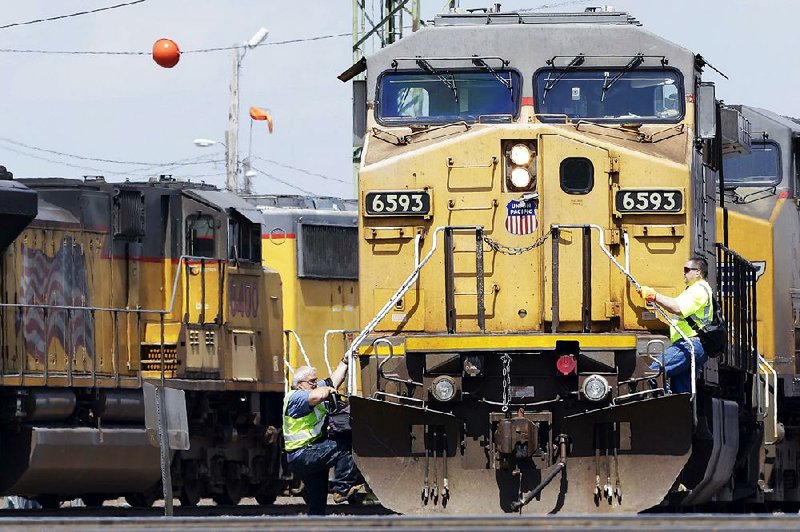OMAHA, Neb. -- Union Pacific's first-quarter profit fell 15 percent, hit by a steep decline in the amount of freight hauled as a result of weak energy and commodity prices.
The railroad based in Omaha, Neb., said Thursday that it earned $979 million, or $1.16 per share. That's down from last year's $1.15 billion, or $1.30 per share.
Per-share earnings topped the $1.10 that analysts had expected, according to a survey by FactSet.
Revenue slumped 14 percent to $4.83 billion, missing expectations. Analysts expected $4.9 billion.
Weak coal demand continues to be a challenge for all the major railroads as utilities switch to natural gas because of low costs and environmental regulations.
Union Pacific Corp. said coal shipments fell 34 percent in the quarter, but there also were declines in shipments of industrial products, agricultural crops and intermodal containers. The railroad cut its expenses by 14 percent to $3.14 billion in response.
"We did a very good job of adjusting our cost structure," Lance Fritz, Union Pacific's chairman, president and chief executive officer, said in an interview.
The overall economy continues to grow but that's obscured in the railroad results by the weak demand for coal, shipments related to shale mining and exports.
"It could be better, but there is broad, slow, steady recovery going on," Fritz said.
The railroad responded well to the slower demand by reducing expenses and improving productivity, Edward Jones analyst Logan Purk said. For instance, average train speed increased 11 percent to 27.3 mph, and the amount of time trains spent sitting in terminals fell 7 percent to 28.6 hours.
"UP is doing a phenomenal job of controlling what they can," Purk said. "I think they're setting themselves up nicely for when volumes come back."
Union Pacific said it also reduced its capital spending plans for 2016 by $75 million to $3.68 billion because of the slower volume.
Union Pacific operates 32,400 miles of track in 23 states from the Midwest to the West and Gulf coasts. It also operates a large maintenance facility in North Little Rock.
Its shares rose $3.47, or 3.5 percent, to close Thursday at $87.32. Its shares are down 20 percent over the past year.
Business on 04/22/2016
